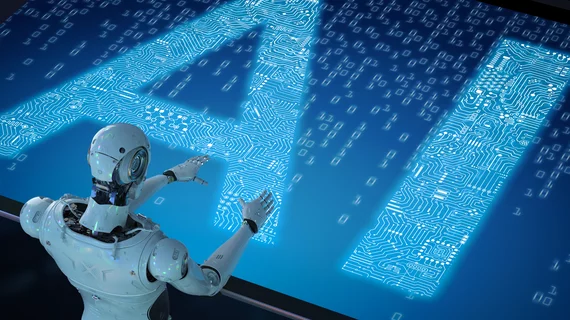AI distinguishes between a heart attack and takotsubo syndrome more accurately than cardiologists
Advanced AI models can be trained to help cardiologists tell the difference between an acute myocardial infarction (AMI) and takotsubo syndrome (TTS), according to new findings published in JAMA Cardiology.
“Patients with TTS typically present signs and symptoms similar to AMI, rendering differential diagnosis challenging,” wrote first author Fabian Laumer, MSc, a specialist with ETH Zurich in Switzerland, and colleagues. “Early recognition of TTS has important implications in clinical practice for appropriate clinical and therapeutic management. Nonetheless, to date, reliable and widely accepted criteria for a differential diagnosis of TTS based on echocardiographic features are lacking.”
Laumer et al. focused on clinical data and echocardiogram results from 448 patients—224 AMI patients and 224 TTS patients—who were originally treated from April 2011 to May 2019. Data from 228 patients were used to develop the team’s deep learning model. The remaining patients were used as an independent data set. Patients were matched by age and sex so that every AMI patient could be compared to a TTS patient.
Single images, the authors explained, do not provide enough information for a reader—human or otherwise—to know the difference between an AMI and TTS. For this reason, the team’s algorithm was trained using video data from echocardiograms.
“The relevant information about the patient’s disease is contained in the characteristic dynamic of the different parts of the myocardium and heart chambers, i.e., the typical wall movement changes in TTS,” the authors wrote. “These regional wall movements were captured by providing the segmented masks of an echocardiogram video as input into the trained autoencoder model. The encoder extracts a compressed representation for each of the frames of a particular echocardiogram video in the data set (Figure 1 D). These resulting latent sequences were then used to differentiate between TTS and AMI.”
Overall, when it came to differentiating TTS from an AMI, the group’s AI model achieved a mean area under the ROC curve (AUC) of 0.79 and an accuracy of 74.8%. A team of cardiologists, meanwhile, achieved a mean AUC of 0.71 and overall accuracy of 64.4% when looking at the same patient data.
The authors also found that, when looking at patients presenting with occlusion of the left anterior descending coronary artery, their AI model once again outperformed the cardiologists by a significant margin.
“In this cohort study we built the first real-time deep-learning–based system for fully automated interpretation of echocardiographic images,” the authors wrote. “Our machine-learning system was trained to differentiate TTS from AMI and results showed the ability to outperform a committee of cardiologists. As more samples become available in the future, deep learning prediction might be substantially further improved, thereby gaining more insights into the dynamics of normal and diseased heart function.”
Related Content:
Bariatric surgery associated with lower risk of death and cardiovascular disease
AI improves detection of severe CAD in stress echocardiograms
AI models capable of identifying RV, LV dysfunction in ECGs
VIDEO: New advances in echocardiography
Reference:
1. Fabian Laumer, MSc, Davide Di Vece, MD, Victoria L. Cammann, MD, et al. Assessment of Artificial Intelligence in Echocardiography Diagnostics in Differentiating Takotsubo Syndrome From Myocardial Infarction. JAMA Cardiol. Published online March 30, 2022.

